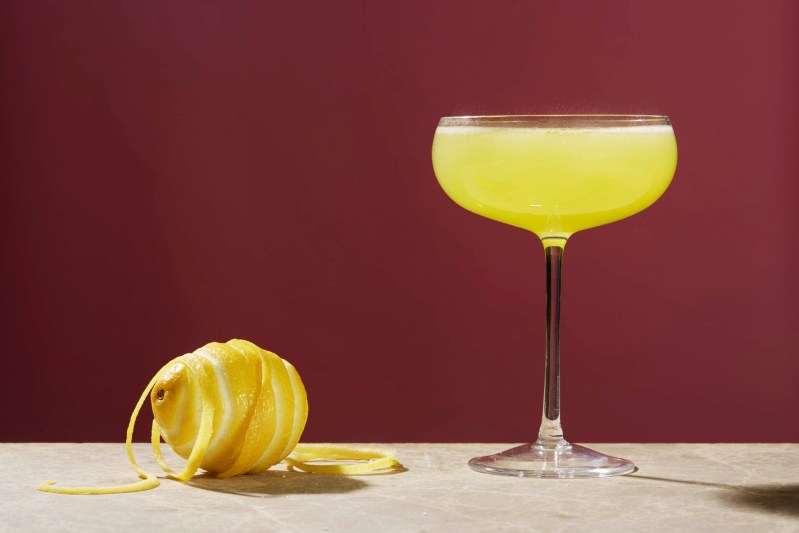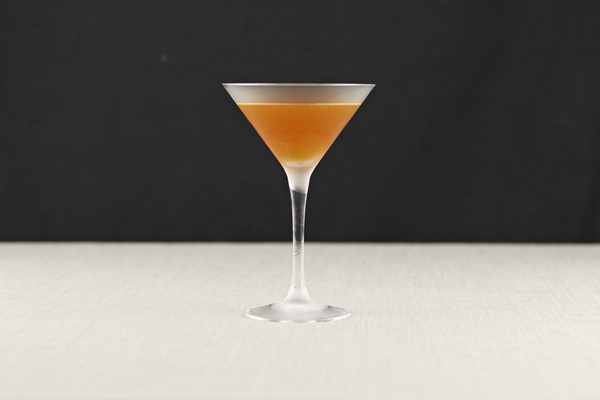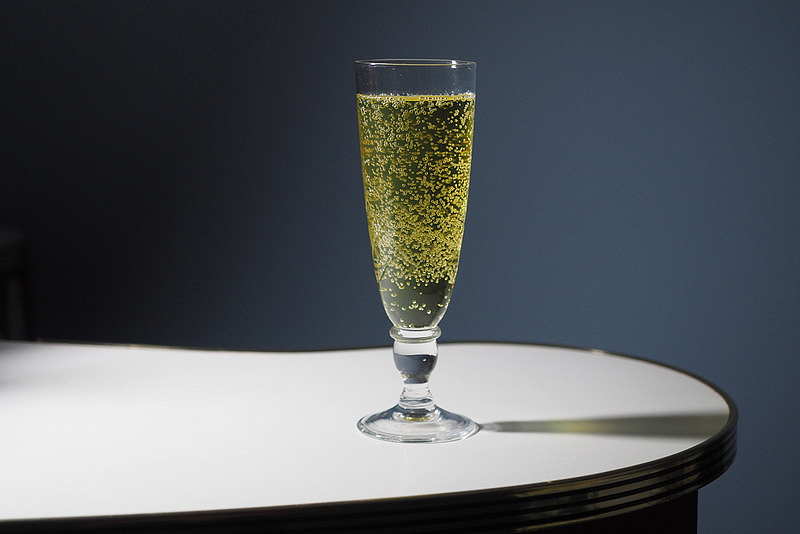Throughout his prolific writing career, Ernest Hemingway rarely went thirsty. The man behind some of the greatest stories ever (A Farewell to Arms, The Old Man and the Sea) loved a good seat at the bar and a well-made cocktail. He’s known to fancy everything from a good Champagne cocktail to a Daiquiri.
Making one of Hemingway’s favorite drinks is not going to make you a better writer, we must admit. But it will allow you to pretend you’re the beloved author for a spell, sipping from a stool in Paris or a cozy Cuban bar. And that’s the kind of imaginative practice the late author would very much approve of.
So if we’re going to focus on one of his many adored cocktails, we might as well go with the one he’s rumored to have invented. Here’s the breakdown on the Death in the Afternoon cocktail.
Origin Story

Hemingway named his cocktail after his 1932 book Death in the Afternoon, a non-fiction book that delves into the traditions and drama of bullfighting in Spain. His drink recipe first appeared in the 1935 compendium So Red the Nose, or, Breath in the Afternoon, which featured drink recipes from 30 authors, including Theodore Dreiser, Erskine Caldwell, and Irving Stone.
In the book, Hemingway explains (sort of) the origin of the cocktail: “This was arrived at by the author and three officers of HMS Danae after having spent seven hours overboard trying to get Captain Bra Saunders’ fishing boat off a bank where she had gone with us in a northwest gale.”
Hemingway also gave precise instructions for making and enjoying the drink: “Pour one jigger of absinthe into a champagne glass, add iced champagne until it attains the proper opalescent milkiness. Drink three to five of these slowly.” By our own reckoning five seems a touch too many, though it’s hard to argue with a man who was tossed by a bull on the streets of Pamplona and was probably the first American wounded on the Italian Front in World War I.
Other Literary Cocktails

Once you’ve mastered Hemingway’s contribution to the world of spirits, try your hand at a few other cocktails crafted by literary minds. One of these, While Rome Burns, was created by Alexander Woollcott, who, like Hemingway, shamelessly named it after his most recent publication. Consisting of two parts Medford rum, one part lemon juice, and a dash of maple syrup, the mellow libation is designed to put you at ease while civilization collapses around you — in short, the perfect drink for our times.
Journalist, explorer, occultist, and infrequent cannibal William Seabrook created the Asylum, consisting of one part gin, one part Pernod, and a dash of grenadine (poured over ice, but not shaken). He said it would “look like rosy dawn, taste like the milk of Paradise, and make you plenty crazy.”
Irving Stone’s Lust for Life cocktail (named after his celebrated biography of artist Vincent Van Gogh) aims for fruit-forward extravagance with his combination of sloe gin, apricot brandy, and the juice of half a lime. And for a foray into the jungle, circa 1930s Southern California, try Edgar Rice Burroughs’ (surprisingly timid) Tarzan Cocktail made from one ounce of Bacardi, one teaspoon of Cointreau, juice from half a lime, and one-third of a teaspoon of sugar.
Death in the Afternoon

A simple but delightful two-ingredient mix, you can also dress this one up with a citrus garnish or some of your favorite aromatic bitters.
Ingredients
- 1 ounces Absinthe
- 4 ounces Champagne
Method
- Pour absinthe into a fluted glass.
- Top with well-chilled champagne.
Editors' Recommendations
- The science of drinking at high altitudes (plus, expert tips for your mid-flight cocktail)
- How to use Pimm’s for a refreshing cocktail this summer
- Celebrate Independence Day with one of these tasty 4th of July cocktails
- Find your partner in adventure: TINCUP and Jesse Palmer want you to rethink date night
- Introducing The Billionaire’s Row, the $100 specialty cocktail that’ll have you feeling rich



